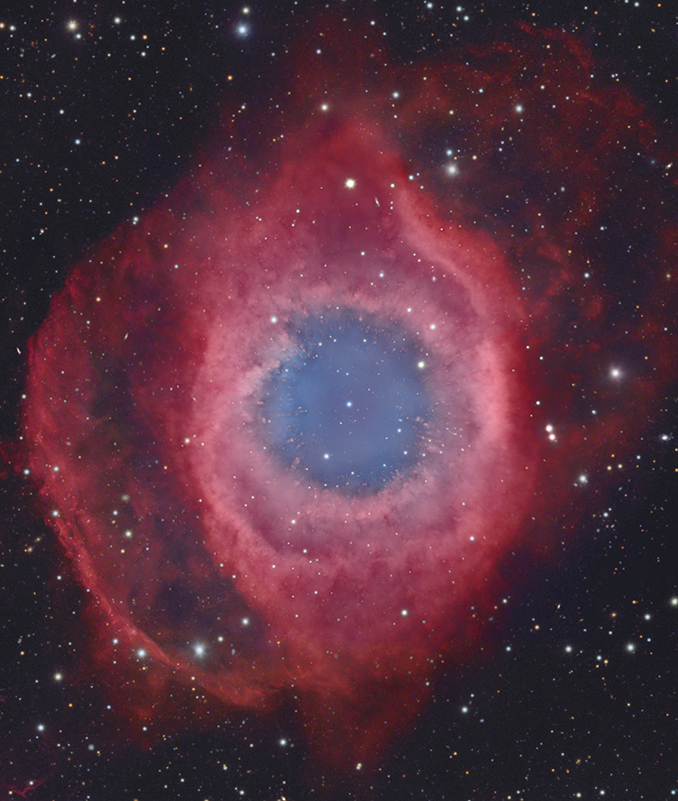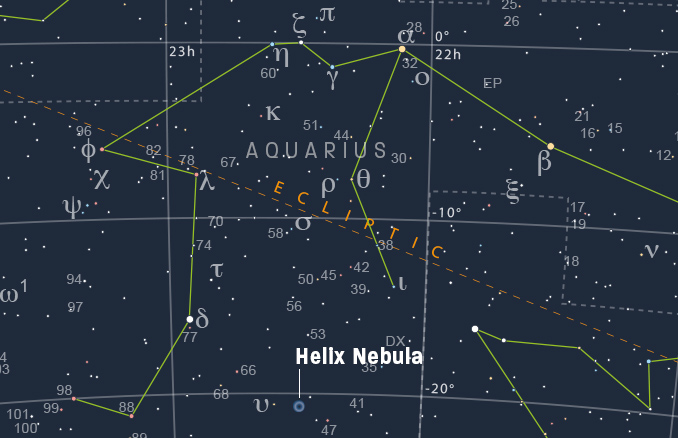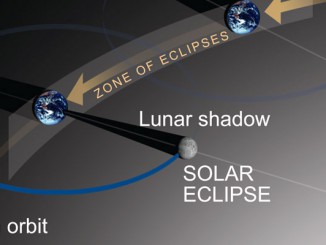
The Helix Nebula (NGC 7293 and Caldwell 63) is arguably Aquarius’ showpiece deep-sky destination. As one of the largest and most remarkably structured of all planetary nebulae, it’s one of the must-see but trickier to image objects of the autumn sky. Looking like a giant, colourful celestial smoke-ring, the Helix can prove somewhat challenging though always irresistible for visual observers.

How to observe
The Helix Nebula has a declination of –20 degrees, which places it in the more southerly reaches of Aquarius. Unfortunately, it never achieves an altitude of 20 degrees from UK shores, culminating at around 18 degrees from the south of England at about 11pm BST at the end of September. It’s essential to take advantage of every degree of altitude to get the best view of the Helix on any given night, so try to observe it when it very close to or on the southern meridian.
Its immediate environs are noticeably lacking in bright stars to signpost the way, but you can use lowly (declination –29 degrees) but bright Fomalhaut (magnitude +1.17, alpha [α] Piscis Austrini) if you can see it (you’ll need to secure a good southern outlook in any case to see the Helix). Upsilon (υ) Aquarii (magnitude +5.2), which is located about 10 degrees (approximately the width across your knuckles held out at arm’s length) north-west of Fomalhaut, is handily located just over a degree east of the Helix Nebula.
If Fomalhaut is not visible or you’re not sure you’ve identified it correctly, check out an alternative route starting from the higher-lying star Skat (magnitude +3.2, delta [δ] Aquarii). Moving south-westwards, look out for magnitude +4.7 66 Aquarii some four degrees away and then a further 2.8 degrees on is the aforementioned upsilon.
On a fine, moonless night at a site free from major light pollution, the Helix, which shines with a catalogued magnitude of +7.5, should be snared through an 80–100mm (~three- to four-inch) telescope operating at the lowest magnification and, preferably, with an O-III or UHC filter. Its symmetrical ‘eye’, or oval-shaped form, extends to at least 14’, half the apparent diameter of the full Moon, afflicting the Helix with a chronic low surface brightness that makes a bit of a mockery of its relatively bright-sounding magnitude – its light being spread over a large area of sky!
Observers using telescopes in the 200mm (eight-inch) class, probably observing from more southern climes where the Helix lies higher in the sky, have reported seeing a blue-green hue. The Helix’s reddish hue, from the light of hydrogen-alpha which dominates in the vast majority of images, won’t be seen, but it radiates substantially in the blue-green light of doubly-ionised oxygen (O-III). The Helix’s magnitude +13.5 central star should be visible in such an aperture.




